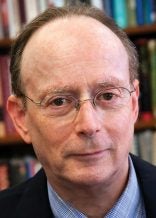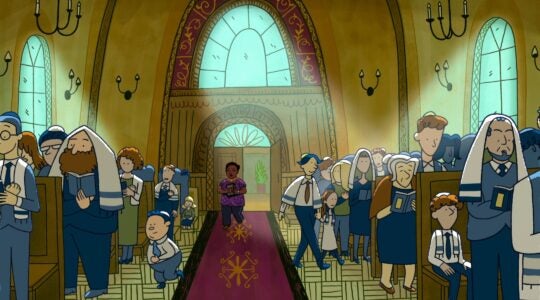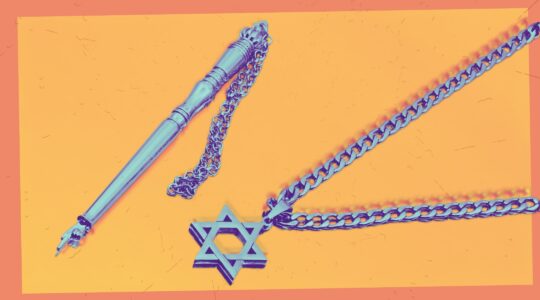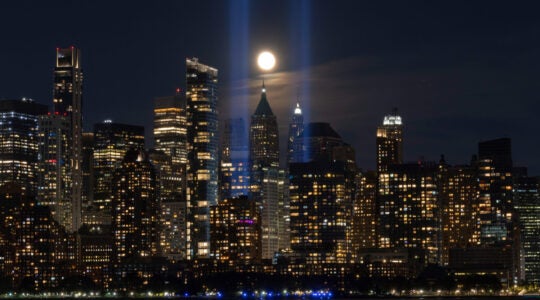The tenth anniversary of the public exposure in these pages of the “Lanner scandal” provides an opportunity to reflect on, and appreciate, how much has changed for the better in the last decade in responding to rabbinic sexual abuse.
With it all, though, communal vigilance is still vital because the problem remains, as do the impulses to overlook or cover up allegations of wrongdoing in high places. And there are voices in the community calling for putting ethical standards in place in synagogues, schools and camps.
What follows is a recap of the story; a look at the impact of the affair on the institutions directly affected, as well as on American Orthodoxy and the larger Jewish society; and a personal note on what it has been like to be the focus of both praise and condemnation from one’s own community.
Three Decades Of Abuse
The story came to light when the first Jewish Week exposé appeared June 23, 2000, following months of investigation and dozens of interviews. It presented detailed allegations of how Rabbi Baruch Lanner, then 50 and the director of regions of the National Conference of Synagogue Youth (NCSY), the youth arm of the Orthodox Union (OU), sexually, physically and/or emotionally abused scores of teen-aged boys and girls in his charge over a period of three decades, despite numerous complaints lodged with the leadership of the organization.
The response to the 5,000-word report was immediate and dramatic.
The OU forced Lanner to resign that day and appointed a special commission to review and report on the charges. (Six months later, its 330-page report, based on interviews with 140 people, confirmed and expanded on The Jewish Week’s reporting and concluded that the OU leadership had made “profound errors of judgment,” including failures of management. Top officials were forced to resign and were replaced. NCSY developed a detailed and stringent policy regarding staff behavior, and parental supervision of and involvement in youth activities.)
The Jewish Week received many hundreds of emails, letters and calls in support of the investigative report, while a relatively small but vocal and influential segment of the Orthodox community, including some of its rabbinate, sharply criticized the newspaper for going public, asserting it violated the religious prohibition against lashon hara, or gossip.
The initial article and subsequent Jewish Week reports prompted two young women (who did not know each other) to come forward to the authorities, alleging abuse by Lanner when they were students at Hillel yeshiva in Deal, NJ, where he was principal. Lanner was arrested, tried and convicted of child sex abuse. He served nearly three years of a seven-year sentence and was released from a New Jersey state prison in early 2008. He no longer works with children.
`Community Has Been Sensitized’
‘What a difference a decade makes,” notes Richard Joel, who chaired the special OU commission when he was international president of Hillel.
Now president of Yeshiva University, Joel said “the community has been sensitized to its own responsibility” in matters of rabbinic abuse.
“Leading the commission was one of the darkest periods of my life,” Joel said, “but it mattered – we can see lessons learned from good people trying to do the right thing.”
As a teen, Marcie Lenk, now a religion professor at Boston University, testified against Lanner before a 1989 beit din that acquitted him of improper behavior. (The head of the beit din, Rabbi Mordechai Willig, issued a public apology for the ruling in 2003.)
Lenk says the Lanner case has had a major, positive impact and that “issues of sexual harassment and abuse of power are now on the table” in the Orthodox community and beyond.
“People acknowledge that these things happen, and victims have come forward.”
The Lanner case was a “watershed” and “made this a public conversation,” according to Lenk, who observes that it is always cited when rabbinic scandals are reported on.
“It was the first public airing” of such incidents “and it was loud.”
She says that despite the painful episode, she does not regret speaking out, and still hears from people who thank her for her courage.
Lenk credits The Jewish Week for bringing the scandal to light, and notes that “the power of the press” is still evident in the widening exposure of the Catholic Church’s cover-up of sexually abusive priests.
“It shows that if the press doesn’t cave, changes can and do happen.”
Rabbi Steven Burg, who was named international director of NCSY in 2005, has been with the organization for 20 years. He says there is little comparison between the old and new NCSY, which today reaches some 35,000 high school students and is, he says, a much healthier and more professional organization.
Besides the stricter standards and procedures, which include an ombudsman telephone hotline, Burg said it is now understood that if there is an allegation of improper behavior, one should go to the police authorities rather than handle it in-house. And he said the “charisma factor,” which Lanner had and exploited in abundance, has been played down today.
“Our staff members need to be entertaining, but NCSY is not as personality-based. There used to be more fear and intimidation” in encouraging youngsters to live more observant lives, he said, but that is no longer the case.
Erica Brown, a prominent Jewish educator in Washington, D.C. who observed Lanner’s erratic behavior when she was in high school, says the Jewish community today is “more transparent and more thoughtful about what rabbinic authority means. There is a level of supervision and expectation and knowledge in the community.”
But she has her concerns.
“We understand that we can’t do business as before,” she said of the community, “but we’re not sure how to do business differently. There is a lot of moral confusion out there.”
She would like to see leaders issue an ethics agenda and institute more advanced measures to prevent scandals, such as psychological testing before a rabbi or educator is hired.
Brown has written a book called “Confronting Scandal: How Jews Can Respond When Jews Do Bad Things,” due out this fall, which deals in part with facing up to criminality in American Jewish life.
One point it makes is that historically “Jews tended to turn a blind eye toward crime” within the community “until it came out in the papers.” She said she worries that “we do the same thing now.”
Creating A Safe Environment
The only organization in the Jewish community dedicated solely to addressing the wrongs of sexual abuse, domestic violence and professional improprieties is JSafe, founded five years ago by Rabbi Mark Dratch, who is still at the helm.
He agrees that there is “much more awareness of, concern for and public discussion about” rabbinic sexual abuse today, though he noted that “guidelines are only as good as the level of enforcement.
“Organizations are forced to pay lip service” to tough standards today “even if they don’t believe it,” he observed.
The further to the right one goes in the Orthodox community, “the more fear there is of law enforcement, and less willingness to cooperate with the authorities,” according to Rabbi Dratch.
He said JSafe trains personnel and helps institutions develop guidelines in terms of education, prevention and dealing with specific individuals who present a problem.
Less successful has been the effort to certify schools, camps and other institutions, giving them a kind of ethical seal of approval.
“Institutions don’t want to give up control,” he explained. “They don’t want an outsider looking over their shoulder.
The most difficult aspect of his work, Rabbi Dratch said, is applying leverage as an outsider to institutions that don’t comply with the standards they signed on to abide by. “They say ‘we can handle this on our own.’”
Another problem, he said, is that each segment of the community is in a form of denial, with liberal Jews saying abuse is an Orthodox problem, and the Orthodox attributing scandals in the larger Jewish community to a lax culture.
“It’s part of our defense mechanism to say ‘it happens to others but not to us,’ ” according to Rabbi Dratch.
While crediting the OU with instituting safeguards and making major personnel changes, Steven Bayme, national director of the American Jewish Committee’s contemporary American Jewish life department, maintains that the impact of the Lanner case on the Modern Orthodox and general Jewish communities is “troubling.”
He sees a greater tendency toward separation of the sexes in the Modern Orthodox world, perhaps due in part to “revulsion to Lanner’s exploitation of women.”
Another ripple effect, he says, is that when the liberal Jewish community considers Orthodoxy, it focuses on Orthodox rabbinic scandals and tends to gloss over the movement’s successes in Jewish education and family life.
“When you allow the pathologies to be the focus,” observes Bayme, “you miss the forest for the trees.”
I Was Taken Aback
Every aspect of the Lanner case is tragic: the damage inflicted on victims who still suffer psychologically decades later; the embarrassment to the community; the notion that a learned and gifted rabbi could be a threat to youngsters; and of course the impact on the man himself and his family.
But there is comfort in seeing the community’s greater willingness to acknowledge and deal with its problems.
One of the great surprises to me in reporting the scandal was that within days after the initial story broke, I was inundated with requests to cover other alleged rabbinic abusers.
It was as if a force had been unleashed, and I was taken aback by the number of alleged abusers and the fury of their accusers.
I wrote a column at the time saying the community needed a mechanism to deal with such abuses, noting that victims approached the press only when they felt they had no alternative, no one else to hear them and take action.
Partly as a result of this vacuum, JSafe was created, but it remains little known and under-utilized. The Rabbinical Council of America has introduced guidelines (with the help of JSafe) to deal with colleagues charged with abuse, and the new procedures have had some success.
Personally, as a journalist, I felt uncomfortable being the subject of a number of news stories in the media. Many focused on the lashon hara element, but I was confident that exposing someone who presented a danger to youngsters was not a violation of Jewish law.
For all the criticism, the fact is that the great majority of the community was highly supportive of our coverage of the Lanner scandal.
Most gratifying has been the approval of the victims, who deserve the highest praise for speaking out. And it was heartening to hear an OU official last week privately credit our coverage for “rescuing” NCSY, which he said was in “an unhealthy place” ten years ago – a far cry from the full-throated criticism voiced by the embattled organization at the time.
A final note: this week’s Torah portion, Chukkat, offers a dramatic reminder of the need to reveal the truth, even when it is unpleasant. We read of God’s punishment of Moses for hitting the rock rather than speaking to it to bring water to the Israelites in the desert.
Consider: even when the greatest Jew in history sins, the episode is not censored from our holiest text.
The lesson for a journalist? Do your best to tell the full story, and trust that in the end the community will benefit.
E-mail: Gary@jewishweek.org
Read Gary’s "Between the Lines" blog here, and be sure to check out the Jewish Week’s Facebook page and become a fan!
You can also follow the Jewish Week on Twitter: start here.
The New York Jewish Week brings you the stories behind the headlines, keeping you connected to Jewish life in New York. Help sustain the reporting you trust by donating today.





